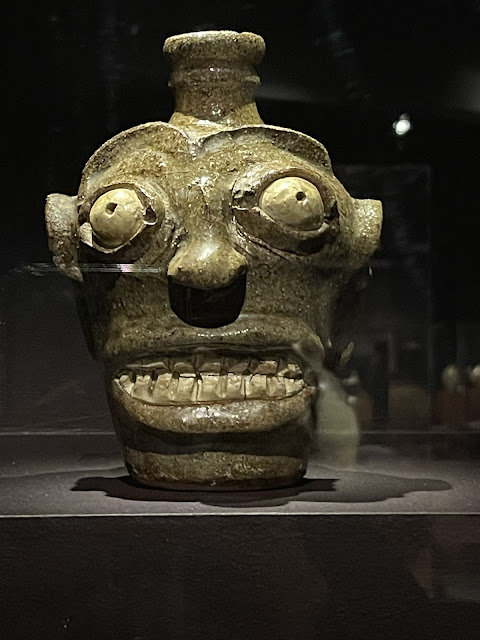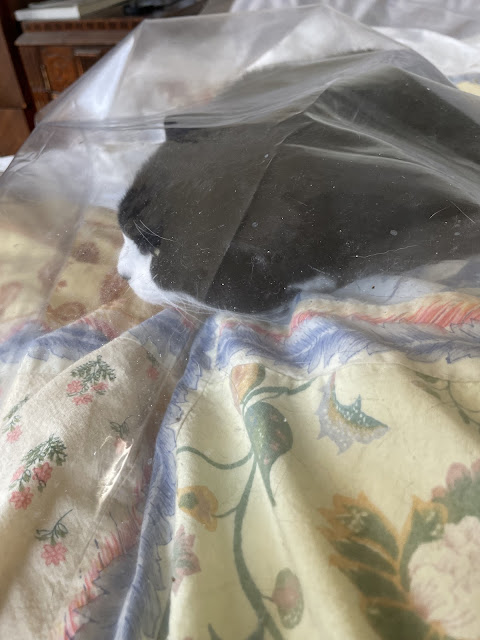Day 413, May 4, 2021
Beautiful Things
Tonight's soundtrack: Beethoven, Symphony No. 3 "Eroica", BSO, Charles Munch, 1960
I was reading a piece this weekend and one of the metaphors was the trim tab on a ship, the rudder. The idea was that a small thing can effect great change if given enough time and space. It is a metaphor of hope for all of our endeavors that, at times, feel so entrenched and fixed in their lanes.
In a similar vein, my mentor, Julie Graham used to talk about the shift in women's rights and how in the span between her mother's lifetime and her own (Julie was born in 1945 and passed away in 2010), that women had gone from not having the right to vote, to near parity with men across the globe. Clearly, the work is not complete, and even in America women still make 82 cents for every dollar men make. However, Julie's point was that tremendous progress was made over the course of two lifetimes, and most of that occurred at a grassroots level where families altered their perceptions of what women could and couldn't do, and it is the grassroots movement that spread to change laws and culture in profound ways. So while not complete, the women's liberation movement, the striving for women's rights, is a model of hope for change and equity and grassroots movements.
 I find myself pulled in multiple directions, I return periodically to the ideas in my classmate Janelle Cornwell's paper on inverting scale, how one can alter perspective from the focus on how many people one affects, to how profoundly one can affect a smaller number of people. My interpretation was that when we focus our impact on the largest number of people, our resolution is not very clear. We are looking at a crowd from the 30,000 foot level. But when we address a smaller group of people, the resolution is much better, you can get down to the fine details. That is part of the appeal of a grassroots approach, an individualized approach.
I find myself pulled in multiple directions, I return periodically to the ideas in my classmate Janelle Cornwell's paper on inverting scale, how one can alter perspective from the focus on how many people one affects, to how profoundly one can affect a smaller number of people. My interpretation was that when we focus our impact on the largest number of people, our resolution is not very clear. We are looking at a crowd from the 30,000 foot level. But when we address a smaller group of people, the resolution is much better, you can get down to the fine details. That is part of the appeal of a grassroots approach, an individualized approach.
But then, there is also the larger scale change that can happen as systems are modified and altered. We can change policy, as Ibram Kendi exhorts us to, and alter power structures. And for people focused on changing policy and systems, the grassroots approach feels sedentary and ineffective.
My friend, and also mentor, and former President at GCC, Bob Pura used to remind me that cultural change happens slowly over time. It takes at least five years for a cultural change to take root. I always found that to be a good reminder to assuage my impatience, for whether working at the grassroots level, or when trying to create college policy, change can take a long time. A cargo ship, even a small cargo ship, needs a very large turning radius, and if the turn is too abrupt, some of the precious cargo might get dumped into the ocean.
So, how do we address the passion of the activist, and the long-term goals of an administrator? The objectives are not really far apart and may even be aligned step for step. I revert to the idea distilled from Kretzmann and McKnight, Asset Based Community Development. In this context, it is about mapping where there are assets and strengths, where are we doing well with racial justice and equity, for example. And once we know where those strengths are, it is easier to make those things stronger, and to use those strengths to make other areas stronger.
Our natural tendency to focus on deficits and absences can be self-defeating. It is so much harder to address those things and fill-in the lacunae, that often no progress is made. One can not ignore the absences, but if the assets are privileged, then the power of the deficits is reduced.
Shawn Harper is doing a similar thing in his research on student success of black men in college. By focusing on successful college students, rather than the students that struggle, a different narrative emerges and a different set of best practices come to light. The knowledge about black male college students is reframed and the story is about achievement and success rather than the intractability of equity gaps.
In the context of economies, we are also often defined by the weakness of the stock market, the diminished rates of growth, the lack of semiconductors, and the like. Simultaneously, there are also other kinds of economic activity that have thrived through the pandemic. The alternatives to capitalist enterprise are myriad and creative in their solutions to problems, like the story of Allison Arevalo, who, when the supermarkets could not keep pasta in stock, started making her own pasta and selling it from her stoop in Brooklyn. There is the community take-it-or-leave-it refrigerator in Shelburne Falls installed outside a grocery store. Online, on social media, there are buy-nothing groups that are solely designed for asking for and giving away items, similar to the Freecycle list-serves. And, of course, there has been the explosion of family and childcare work that occurred through the pandemic as parents became teachers or co-teachers and full-time caretakers, often as they maintained other work as well. All of these facets of the economy are just as valid, and I would argue, more consequential to our actual well-being than what happens on Wall Street.
I am eager to see what we learn out of all of this. What will we learn from the global push for racial justice? What will we learn from the travails of the pandemic?
The New York Times recently ran an article about how many of us are languishing as a result of the pandemic. And in response to that article, there was another today about what it means to flourish. I was too impatient to take the accompanying quiz, but one of the tactics of flourishing was to engage in a kind of asset mapping. How do you train yourself to recognize the wonder and beauty around you?
When I was leading a reading group for Changing Lives Through Literature, I gave each of the participants (probationers, probation officers, and judges) 3x5 cards and asked them to carry the cards around with them each week, and whenever they saw something beautiful, or something they wanted to share, to write it down. It was in part, a little practice at being a writer, but it was also practice at how to be more observant, and how to privilege certain things in your observations, because, if you do not seek out to preserve those beautiful things, so often they disappear like a middle-of-the-night-dream.
Of course, it brings us joy when we see ourselves in self-help articles, like reading an article on how to measure one's health and finding that, at least by one unit of measurement, you are fit (even if you are too lazy to see if the other units of measurement agree). So, I'm not sure I would call myself flourishing in the pandemic, but I am not languishing either, at least most days.
It is a lot to try to balance, the flourishing of the self, within the context of everything that is happening in our world as we attempt to address racial justice, the pandemic, our various institutional structures, and can we do this in a measured way that affirms our life force rather than squashes it?
Someone shared a post today that said, every day a dog wakes up, it is the best day of that dog's life. That struck me as particularly funny and freeing in a simple way. Luckily (or not), we aren't dogs, but maybe we can learn from them a little bit too, and get excited by the squirrel hiding under the car, or the potential for a treat at the end of a walk.
A few winding thoughts for the day.
Take care and be well,
Leo
From Our Friends:
by Eileen Hoenigman Meyer
 April is Celebrate Diversity Month, an opportunity to explore and honor the heritage and cultural traditions of those in our campus communities. The aim is to create a sense of belonging among students, staff, and faculty and to foster a sense of cultural awareness and fluency. Refining this awareness is a vital part of the higher education experience.
April is Celebrate Diversity Month, an opportunity to explore and honor the heritage and cultural traditions of those in our campus communities. The aim is to create a sense of belonging among students, staff, and faculty and to foster a sense of cultural awareness and fluency. Refining this awareness is a vital part of the higher education experience.




Comments
Post a Comment